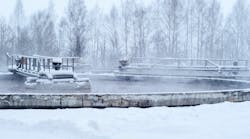Well, you know…we all want to change the world, right?
Something tells me that Lennon and McCartney weren’t thinking about the water and wastewater industry when they penned “Revolution” in 1968. But hey, it’s 2007 and in the spirit of music these days, I changed the song up a bit for my own personal use, altering the title from revolution to resolution.
With it being the New Year and all, I guess it’s time to throw out the time-honored tradition of making a New Year’s resolution, per se. What’s mine, you ask? Chances are you don’t want to know. Rather, I will get on board with a resolution that many of you in the water and wastewater industry, specifically in the Midwest, should immediately embrace—upgrading your aging sewer systems.
In late 2006, the Sierra Legal Defence Fund, which is based in Vancouver, B.C., released what they term as their first Great Lakes Sewage Report Card.
Having lived along the shores of Lake Michigan most of my life, I had a suspicion as to what Sierra Legal’s report card might reveal.
The report analyzed 20 cities in the Great Lakes Basin and graded each on how well they manage their sewage. Of course, the results were not good, as much of the Great Lakes’ water along urban areas was found unsafe, despite the efforts of many of the 20 coastal cities to clean up the discharge into the Great Lakes.
The author of the study, Dr. Elaine MacDonald, said, “The Great Lakes Basin is one of the most important freshwater ecosystems on the planet—holding one-fifth of the world’s freshwater. Yet, the 20 cities we evaluated are dumping the equivalent of more than 100 Olympic swimming pools full of raw sewage directly into the Great Lakes every single day.”
Some very strong statements made by Dr. MacDonald, to say the least.
According to the report, many cities along the Great Lakes have old systems in place for collecting and treating sewage, and sometimes the sewage is released untreated into local waterways. Mind you, the report stated that of the 20 cities evaluated, it has been estimated that more than 23.5 million gal of untreated sewage is dumped into the Great Lakes each year.
Cities such as Toronto, Syracuse and Hamilton are pegged with low grades, while Detroit, Cleveland and Windsor are listed as the three worse offenders for sewage dumping. According to the report, these cities were earmarked due to serious problems related to aging combined sewer systems that merge storm water and sanitary sewers into a single pipe, which often overflow during rainstorms.
On the flip side, Green Bay, the Peel Region and Duluth are listed as cities that have sophisticated treatment processes and allow very little sewage to escape due to combined sewer overflows and spills.
Now I know that putting a stop to the combined sewer overflows into the Great Lakes is much easier said than done as miles of red tape are involved with a plan such as upgrading a sewer system.
However, if you are an engineer or consultant employed by one of the municipalities in the immediate area of the Great Lakes, make it your resolution to at least take the time to examine the possibility of a system upgrade. It is essential that sewage overflows into the Great Lakes be addressed immediately, and it is up to you to take action in your municipality before we find ourselves in a situation many years from now that may be irreversible.
Who knows, you may say you got a real solution; we’d all love to see the plan.

